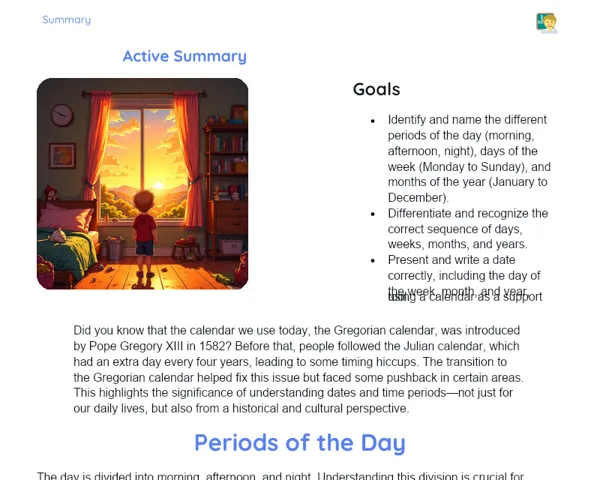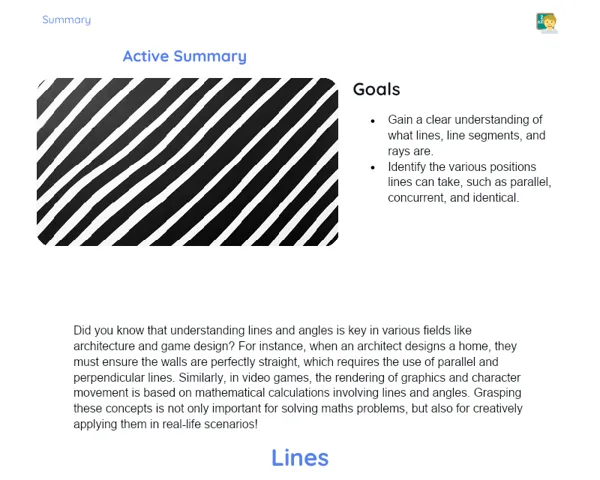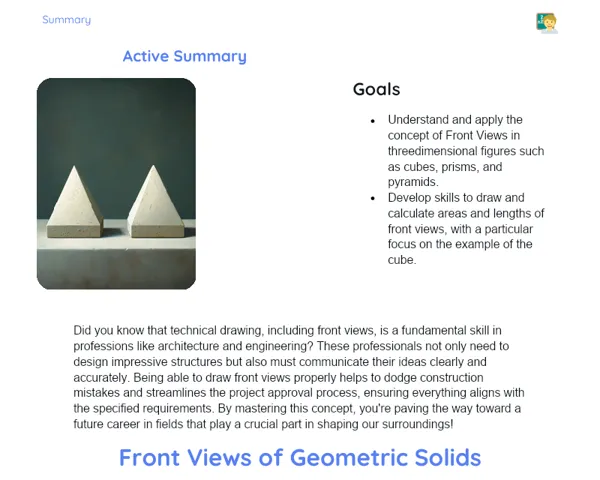Objectives
1. 🔍 Understand what regular polygons are by identifying their unique characteristics and properties.
2. 📊 Calculate the number of diagonals that cross the center of regular polygons using logical reasoning and formulas.
3. 📐 Determine the internal and external angles of regular polygons by applying geometric concepts and specific formulas.
4. 💡 Solve practical and theoretical problems involving regular polygons to enhance the ability to apply mathematical knowledge in various situations.
Contextualization
Did you know that regular polygons are not just beautiful shapes but also essential components found in nature and art? For instance, honeycombs are crafted from hexagons. This marvel of nature showcases not only aesthetics but also mathematical efficiency, as hexagons fit together perfectly without leaving gaps, optimising space usage. Thus, by understanding regular polygons, we appreciate not only mathematics but the elegance and efficiency of the world around us.
Important Topics
Definition of Regular Polygons
Regular polygons are flat geometric figures where all sides are equal in length, and all internal angles are the same.
-
Equal Sides: In a regular polygon, each side has the same length, providing a sense of symmetry and order.
-
Equal Internal Angles: All internal angles are identical, which is crucial for defining a regular polygon.
-
Common Examples: Examples include the equilateral triangle, square, regular pentagon, and regular hexagon, among others.
Number of Diagonals
To find the number of diagonals that can be drawn from a vertex in a regular polygon, you can use the formula (n * (n - 3)) / 2, where 'n' represents the number of sides.
-
Significance of Diagonals: Diagonals help subdivide the polygon into smaller regions, aiding in area calculations and understanding its structure.
-
Calculation Formula: This formula provides a systematic way to calculate diagonals, which is essential in geometry and engineering.
-
Practical Use: Knowing the number of diagonals is helpful when dealing with polygon meshes in computer graphics.
Internal and External Angles
The sum of the internal angles of a regular polygon is determined using the formula 180° * (n - 2), with 'n' being the number of sides. Each external angle is supplementary to its corresponding internal angle and can be calculated as 360° / n.
-
Sum of Internal Angles: This formula is key to understanding general polygon properties and is foundational for many other geometric calculations.
-
External Angles: Knowing how to calculate external angles assists in visualising symmetry and understanding the layout of a polygon's sides.
-
Relevance in Design: Understanding both internal and external angles is critical for architects and designers, as it impacts the creation of stable and attractive structures.
Key Terms
-
Regular Polygon: A polygon with equal sides and angles.
-
Internal Angle: An angle formed by two adjacent sides of a polygon.
-
Diagonal: A straight line connecting one vertex of the polygon to another non-adjacent vertex.
For Reflection
-
Why is symmetry crucial in defining regular polygons, and how does it impact their practical applications?
-
In what ways can studying regular polygons enhance spatial visualization and geometric reasoning in other mathematical areas?
-
What value do regular polygons bring to technology and engineering applications, given their efficiency and structural soundness?
Important Conclusions
-
We delved into the intriguing realm of regular polygons, unveiling their unique attributes of equal sides and angles, and how these traits influence practical applications in fields like architecture and engineering.
-
We discovered how to calculate the number of diagonals passing through the centre of a regular polygon, essential for a comprehensive understanding of its shape and usability in design and computer graphics.
-
We highlighted the significance of both internal and external angles, exploring how to calculate them and their importance for professionals working with geometric shapes and structures, thereby aiding project optimisations in stability and visual appeal.
To Exercise Knowledge
- Sketch a regular hexagon and determine the measure of one of its internal angles. 2. Attempt to construct a regular octagon using just a ruler and compass, applying the formulas learned. 3. Develop a small art project featuring regular polygons, such as a tile pattern, and discuss how their symmetry enhances the aesthetic quality of the design.
Challenge
🌟 Magic Polygon Challenge: Using the fewest possible regular polygons, try to create a figure that has exactly 2021 diagonals. Keep track of your steps and explain how you selected the number and types of polygons used.
Study Tips
-
Regularly review the formulas and properties of regular polygons, creating flashcards for better retention.
-
Practice drawing regular polygons in various sizes and orientations to strengthen your visual comprehension of shapes.
-
Explore drawing and 3D modeling software that enables the construction and manipulation of polygons for a more interactive understanding of their properties.



